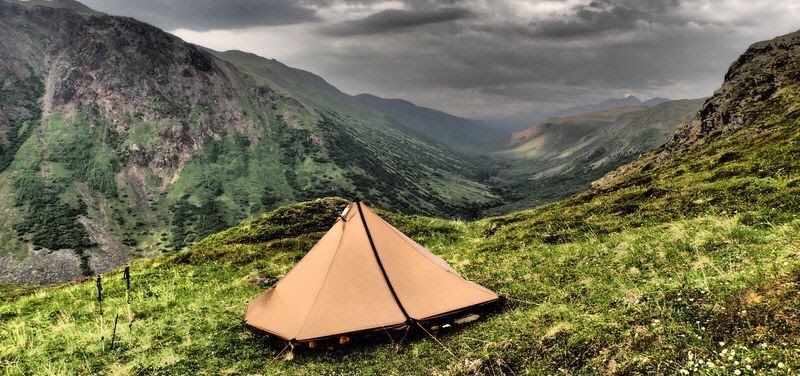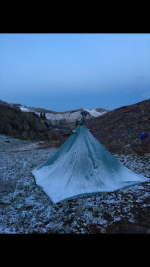I have heard a few cases of stakes being pulled out by high winds. Obviously this can happen with any kind of shelter if the stake isn't properly secured. But it seems to me that the consequences of that differ somewhat for different types.What failures have you heard of besides poles collapsing? Floorless you can cut wood poles to support and eliminate most worries. They are sturdier than 99% of backpacking style shelters with those flimsy aluminum poles
Sent from my SM-G955U using Tapatalk
For example, there are 8 stake points on my REI tent (though 2 of them aren't really essential most of them). Four of them stake the corners of the main tent body - not the fly- to the ground. If any of those fail, it's not catastrophic, because my body is still holding the tent down (assuming I'm in the tent when this happens!) That particular corner will move more and the tent will be less stable overall, but otherwise it seems like the shelter is still relatively functional. Not great, but better than complete failure. I'd say only two of the stakes (holding the fly vestibules out) would cause serious problems on failure, because then the fly would lose a lot of tautness, flap around in wind, and the shelter would be very compromised in rain / snow.
Now, I've never slept in a non-free-standing tent in rough weather, so I could be wrong here... but I'm guessing that most of the stakes in a tipi or trekking pole tent are pretty essential, since those shelters only continue to stand due to the tension created by the stake connection points. Your body isn't holding anything down if some of those stakes start to go. Someone correct me if I'm wrong. In other words... I wonder how many stakes can go before each style of shelter becomes essentially worthless in a storm.
Of course stake security is only one of many factors, but there's a thought.



